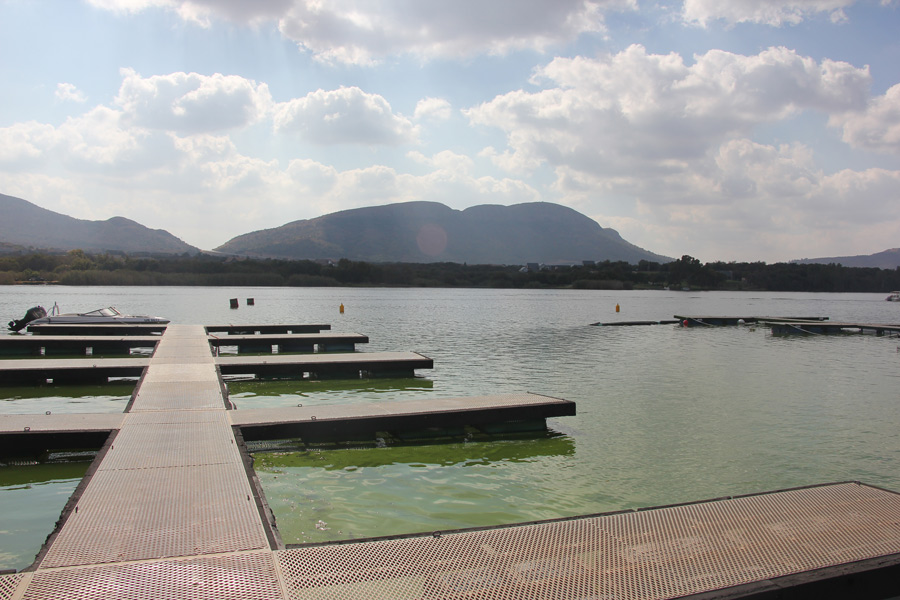- Invasive aquatic plants, like the water hyacinth, cause significant economic and environmental impacts.
- Traditional control strategies, such as manual removal and herbicide application, are ineffective in the long term.
- Biological control through the release of natural enemies to these plants offers a sustainable long-term solution.
- In South Africa, Professor Martin Hill of Rhodes University and colleagues have dedicated years of research into the effective ways of biologically controlling invasive aquatic plants.
- Their recent study on the release of the water hyacinth hopper, Megamelus scutellaris, indicates that it might be an effective control agent.
With the expansion of plant trade, the transport of aquatic plants around the world has increased over the last 100 years. However, some of these plant species establish in new environments, where they proliferate and cause problems. One such invader in aquatic ecosystems is the water hyacinth. It occurs naturally in the Amazon Basin in South America but has spread throughout the world, including South Africa, through the horticultural and aquarium trade. It significantly impacts biodiversity and the ability to use water resources in the systems it invades.
Manual and mechanical removal of invasions is ineffective due to the plant’s rapid growth. Meanwhile, chemical control with herbicides can have negative impacts on the ecosystem. Biological control – using herbivorous insects that feed on the plant – offers a more sustainable solution. Several species have been released in South Africa for biological control of the water hyacinth, with varying success. Martin Hill, Professor of Entomology at Rhodes University, South Africa and colleagues have extensively studied the use of various biological control methods, with a special focus on the water hyacinth planthopper, Megamelus scutellaris, as a control agent.

Impacts of aquatic plant invasions
Invasive aquatic plants possess traits that contribute to their invasiveness, such as rapid asexual reproduction, efficient dispersal, and the ability to regenerate from fragments. Once established, the lack of competition from native floating plants, lack of natural enemies, and nutrient-rich waters further aid their invasiveness to create vast mats of floating plants across aquatic systems. This has significant economic and environmental impacts.
Aquatic plant invasions lead to a decrease in the quantity and quality of water available for urban, recreational, agricultural, and industrial use. In large river systems and impoundments in South Africa, invasive aquatic plant populations harm communities dependent on fishing, water sports, and tourism as they block access to economically valuable waters. The agricultural community also incurs significant costs related to aquatic plant invasions, including the replacement of irrigation pumps that become clogged and the loss of livestock due to drowning.
Aquatic plant invasions lead to a decrease in the amount and quality of water available for urban, recreational, agricultural, and industrial use.
In addition, dense mats of invasive floating plants mean that native submerged plants receive less light, which in turn, reduces the amount of dissolved oxygen available in aquatic ecosystems. Biodiversity becomes significantly reduced and ecosystem functions are interrupted. Due to the continued nature of invasions, further reductions in biodiversity are expected, as well as alterations in various processes in aquatic environments, such as sedimentation, further impacting water utilisation.
Pollution drives water hyacinth invasions
Water hyacinth is the most important invasive plant species in freshwater ecosystems in South Africa. It was first discovered in KwaZulu-Natal in 1910 and was dispersed by gardeners, aquarium owners, and boaters. It is now widespread throughout the country in rivers, lakes, impoundments, and wetlands.
South Africa is water-scarce and largely dependent on man-made reservoirs, most of which are located downstream to densely populated urban areas. This causes the water to become enriched with nutrients, particularly phosphate and nitrate, through improperly treated wastewater flowing into the reservoirs.

Increasing urbanisation, agriculture, and industry also lead to nutrient enrichment in natural aquatic systems, such as rivers and wetlands, in South Africa due to increased pollution. Such nutrient enrichment has been linked with the proliferation of water hyacinth. This is because disturbances to aquatic ecosystems and the higher presence of nitrate and phosphate associated with urban, agricultural, and industrial development and pollution promote plant growth. Once the plant is established, it is exceedingly difficult to control invasions, even if the initial disturbance is addressed.
A sustainable control solution
In contrast with manual, mechanical, and herbicidal control, biological control of water hyacinth is both economically viable and environmentally sustainable. In South Africa, biological control of water hyacinth began in the 1970s, with the mottled water hyacinth weevil, Neochetina eichhorniae, being released as a natural enemy to graze on the plant. However, several factors can affect the success of biological control of hyacinth, such as water nutrient quality, cooler temperatures, and interference from herbicides. For example, after winter, the plant often recovers quicker than its biological control agents, meaning invasions can outgrow the control effort.

The water hyacinth hopper, Megamelus scutellaris, is the most recent agent to be released in South Africa against water hyacinth in 2013. Hill and colleagues observed that this herbivorous insect is now established and has an impact on water hyacinth coverage, even in cooler and nutrient-enriched areas where other biological control agents have struggled so far. Megamelus scutellaris can even be used as a standalone treatment without the need for herbicides.
The researchers suggest an inundative approach to biological control, where agents are released often and in high numbers at strategic times of year – such as directly after winter before plant regrowth can occur. This approach, designed to overwhelm water hyacinth with biological control agents, is highly effective, and the researchers have noted that areas where an inundative release is not used, have a lower success rate in reducing the total coverage of the plant. South Africa also has three mass-rearing facilities to produce biological control agents on demand, with Megamelus scutellaris being easy to produce due to its short development time and high reproductive rate.
The water hyacinth planthopper, Megamelus scutellaris, can even be used as a standalone treatment without the need for herbicides.
Hill and colleagues assert that this biological control not only represents a sustainable long-term solution to water hyacinth invasions, but successful biological control also facilitates ecosystem recovery and the restoration of biodiversity in invaded aquatic systems. Successful control also addresses some of the economic impacts associated with these plants, with subsequent expansion of crop and fish production leading to increased income for local communities, making biological control of water hyacinth a desirable solution going forward.
What inspired you to pursue this line of research?
I am driven to reducing the amount of pesticides sprayed in the world. Biological control of both invasive alien plant species and insect pests allows me to contribute to this cause.
How long does it take for biological control agents to establish in an invaded system?
This really depends on the agent and the target weed. We were lucky with Megamelus in that it has established pretty much at every site where we have released it straight away. This is not the case for all agents – some might take years to get established and start to impact weed populations.
Are there any concerns related to the release of biological control agents?
There are always concerns amongst the public (and some sectors of the scientific community) about the risk associated with biological control. Biological control researchers understand this and are thus understandably risk averse. Agents spend years and sometimes, decades under investigation to ensure that they are safe for release. In the field of weed biological control, I would estimate that 30–40% of agents targeted for research are not released although they are no doubt entirely safe, mostly because the scientists have been unable to show this during pre-release studies.
What are the next steps to further your research?
There are a number of new aquatic invasive alien weeds and other weeds that our group is targeting for biological control.











